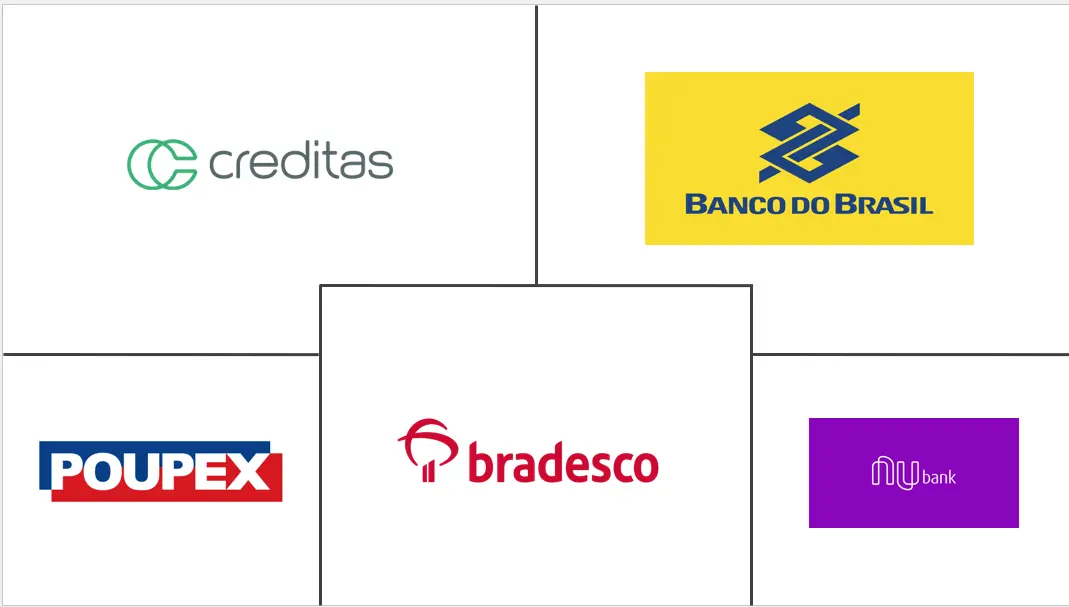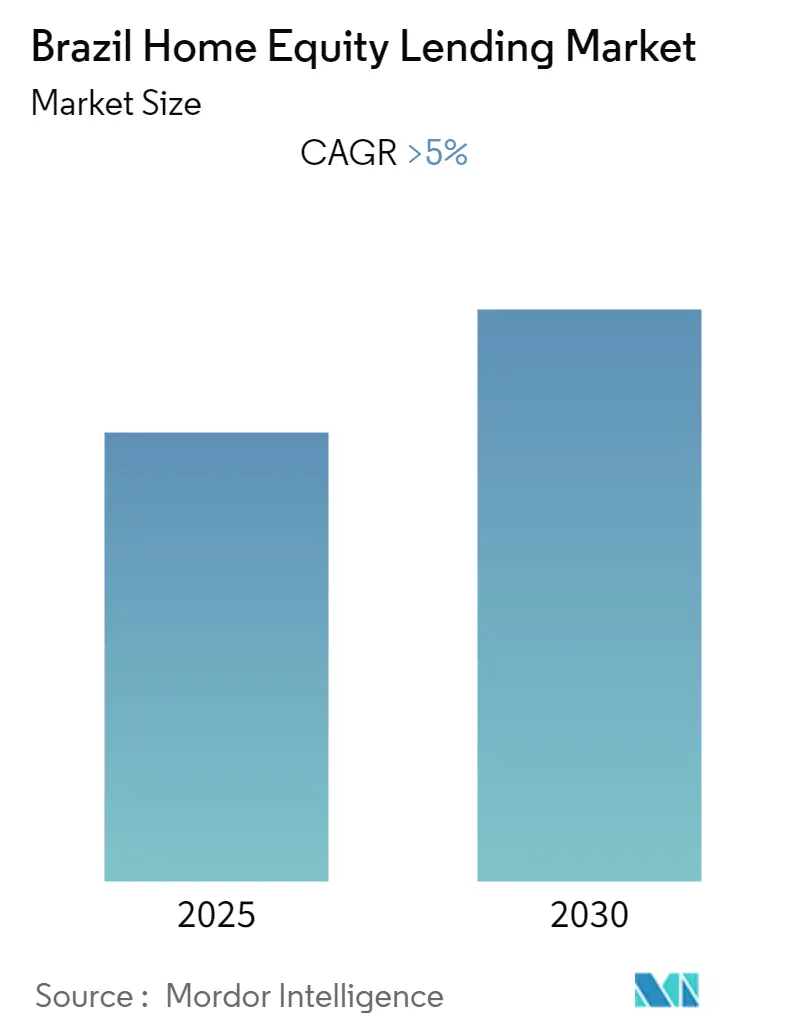
Brazil Home Equity Lending Market Analysis by Mordor Intelligence
The Brazil Home Equity Lending Market is expected to register a CAGR of greater than 5% during the forecast period.
In December, the amount of outstanding loans in Latin America's largest economy grew to 3.47 trillion reais (USD 826.4 billion), up 1.6% from the previous month and 6.5% from the previous year, the second yearly increase in a row. The results represent an increase in the demand for and availability of private-sector bank loans free of government interference, as opposed to credit given by state-run enterprises.
Brazil's recovery from the 2015-16 recession was precarious even before the crisis began, and its fiscal headroom was restricted. Significant successes, like as the 2016 expenditure cap regulation (teto dos gastos) or the 2019 pension reform, did not have enough time to produce fruit before CoVID-19 overwhelmed the world and Brazil. The epidemic, and the health-care reaction to it, have essentially resulted in two shocks for Brazil: an external shock, which includes international demand and pricing, and a local shock, which includes unemployment. High corporate and, in certain cases, national debt was already a source of worry prior to the outbreak of COVID-19. Rapid and substantial loan support has boosted debt levels, particularly in the hardest-hit industries. Addressing the debt overhang, including enabling the market departure of unviable corporations and encouraging the efficient reallocation of resources to viable firms, might be a crucial issue for policymakers in the future.
WFH arrangements promoted digitisation in financial services by promoting the deployment of new technology. While it appears that outsourcing to third-party providers, such as cloud services, has improved operational resilience at financial institutions, greater dependence on such services may introduce new issues and risks. Effective risk management across the supply chain is critical for managing operational and cyber risk.
Home equity is expected to rise from 3% to 20% of Brazilian GDP in 20 years if bureaucracy such as decentralised property registration, guarantees, and legal conflicts are abolished. In Mexico and Chile, two additional Latin American nations, home equity accounts for around 10% and 14% of GDP, respectively.
Brazil Home Equity Lending Market Trends and Insights
Brazil's Real Estate Boom During the Pandemic
The COVID-19 epidemic is altering the Brazilian real estate market. People who were formerly drawn to major cities are now exploring for chances outside of the congested urban centres. In September 2020, 13,438 homes were sold in Brazil, the highest monthly sales performance since 2014. Rising demand resulted into rising prices, and the Fipe-Zap index increased by 3.2% year on year to 133.29 points in October 2020, the largest gain since 2008.
Property rental and buying preferences have shifted significantly as individuals strive to reconcile work and family life in the new remote working environment. Larger rooms and enough space for a home office have become essential characteristics of the most desirable residences. Quinto Andar, a Brazilian real estate startup, noticed a 67% spike in demand for four-bedroom residences between April and May 2020, while demand for flats with up to three bedrooms increased by 6%. Demand for properties, particularly those in gated communities, soared by 76%.
The greatest economic reason for this real estate anomaly is low loan rates. Brazil once had unusually high real interest rates, with the SELIC peaking at 25.5% in the first quarter of 2002. The central bank was able to maintain a continuous policy of interest rate reduction due to the successful management of the inflation targeting programme, the buildup of foreign reserves during the commodities boom, and other institutional improvements. From 2017 to 2020, the Selic rate was cut by 12.25% points each year, reaching 2% in October 2020, the lowest level ever.
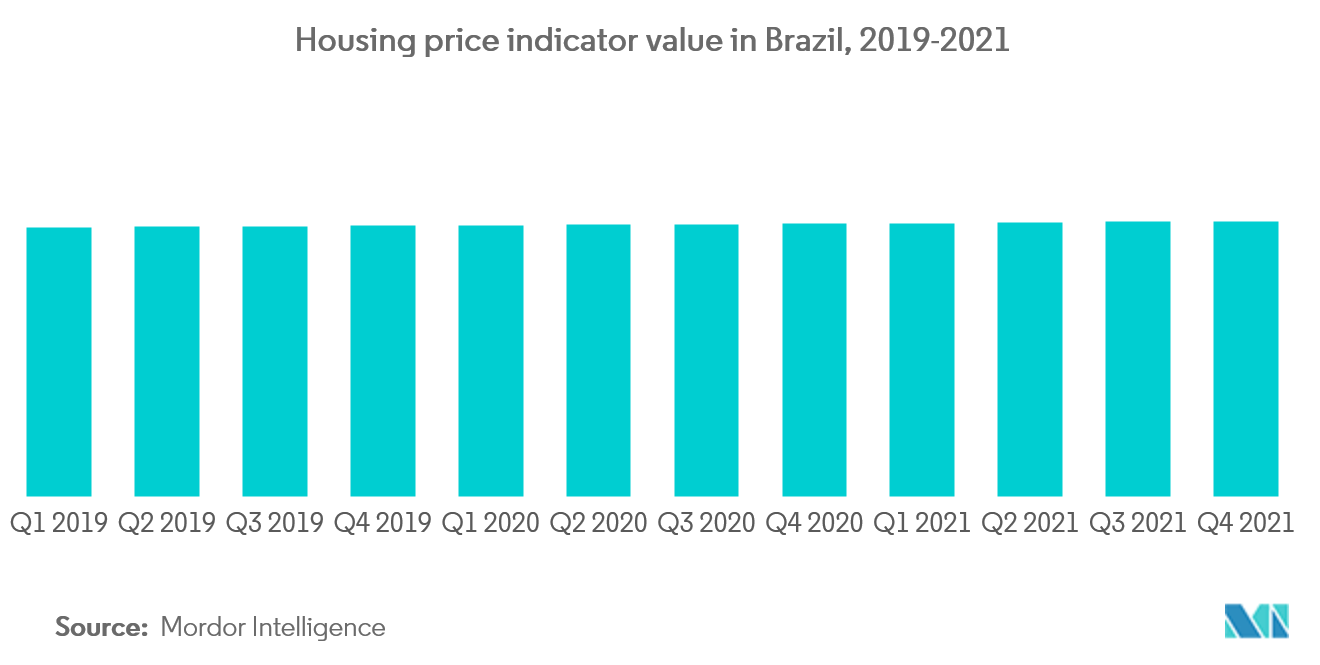
New Building Financing is rising in Brazil
The growing importance of new residences in the Brazilian real estate industry This trend is most visible in mortgage financing. Previously, the majority of loans were for resale houses, but the trend has shifted to new properties. The Brazilian real estate market has historically suffered from a substantial supply shortage, with the gap amounting to millions of dwellings. And the most recent consumer demand numbers indicate that this situation is unlikely to alter in the foreseeable future. Brazilian real estate activity was brisk in the first three months of 2021. New-build property sales increased by 27.1% last year, totaling 53,185 units. Plots of land continued to sell quickly, with purchasers particularly interested in lots in complexes featuring common facilities such as pools and recreation spaces.
Mortgage lending also increased dramatically in Q1. On the strength of ongoing low interest rates, the number of loans increased by 112.8% across the country last year. Mortgage loan levels nearly quadrupled in some regions of Brazil, such as Ceará, in a year. The strength of the real estate market is so robust that it is presently a key driving factor in the Brazilian economy. The Brazilian Statistical Institute (IBGE) mentioned that GDP increased by 1.2% in the first quarter of 2021. The Institute attributes this gain to two areas of the economy: civil construction (up 2.1%) and real estate (up 1%).
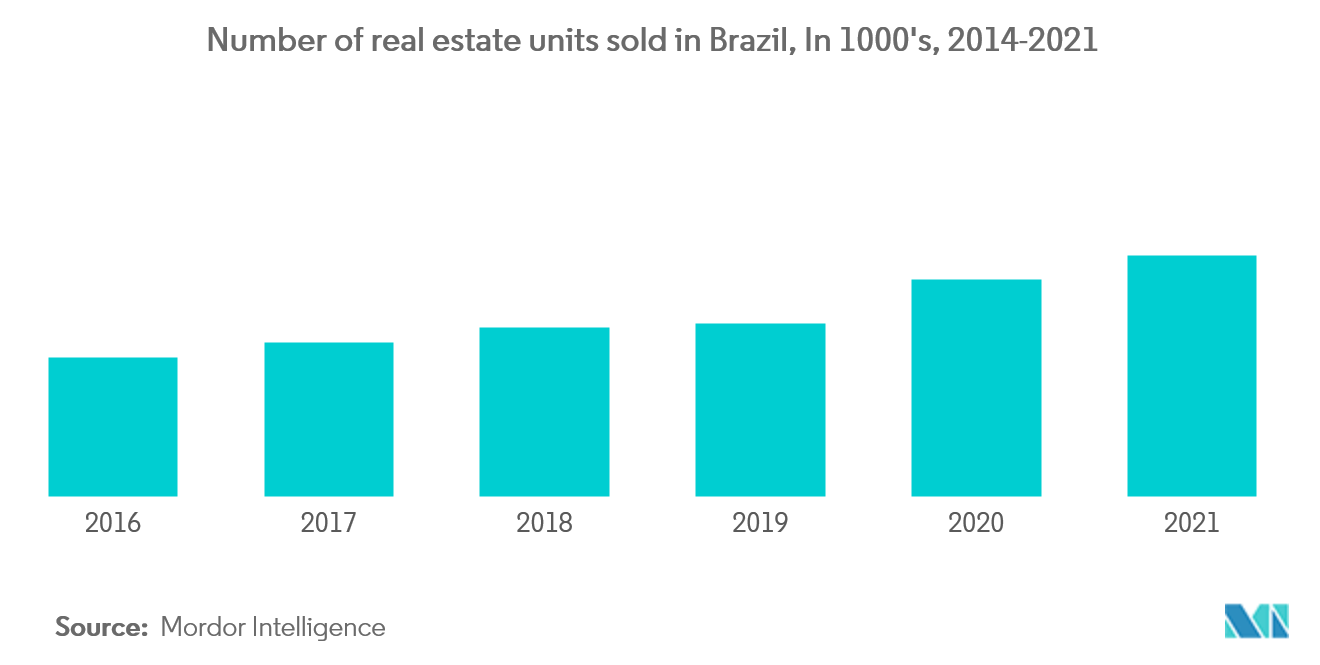
Competitive Landscape
The Brazil home equity lending market is consolidated with some major players like Banco Bradesco, Banco da Brasil, Banco Santander, Poupex. However, with technological advancement and product innovation, mid-size to smaller companies are increasing their market presence by securing new contracts and tapping new markets. The growth of financial services like Creditas and NuBank have been gaining importance in Brazil home equity lending market.
Brazil Home Equity Lending Industry Leaders
Associação de Poupança e Empréstimo Poupex
Creditas
NuBank
Banco do Brasil
Banco Bradesco
- *Disclaimer: Major Players sorted in no particular order
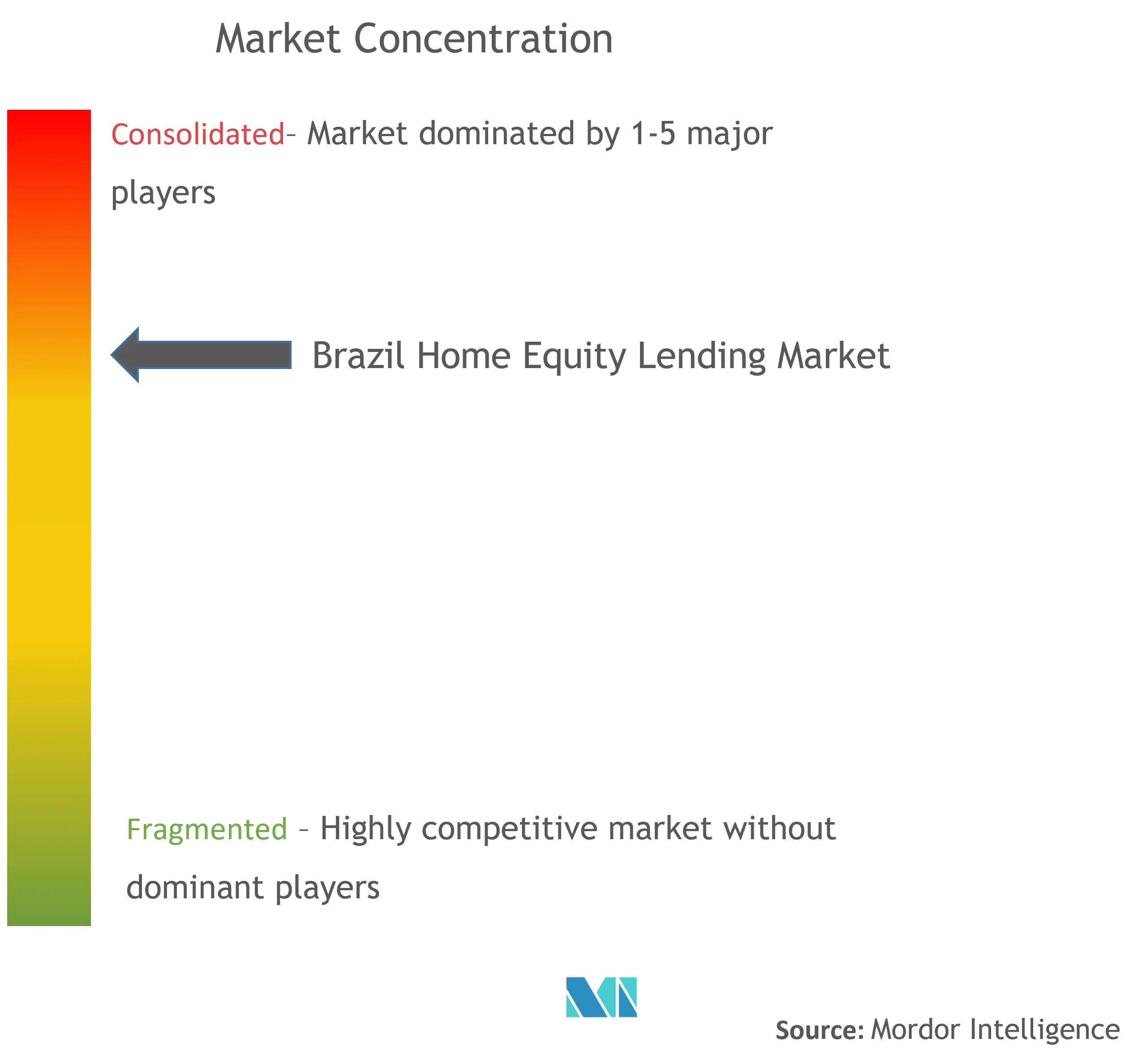
Recent Industry Developments
- April 2021- FinanZero, a Brazilian online credit marketplace, announced the completion of a $7 million round of investment, the company's fourth since its inception in 2016. To now, it has raised a total of $22.85 million. People may use the real-time online loan broker to apply for a personal loan, a vehicle equity loan, or a home equity loan for free and get an answer in minutes. FinanZero's success is due in part to the fact that it does not provide loans but rather partners with roughly 51 banks and fintechs to support them.
- Nov 2020 - CrediHome, a Brazilian digital real estate finance platform, has received central bank clearance to start originating its own credit. The fintech company is now attempting to enter the country's consolidated mortgage market with offerings that threaten more established methods. Its financing procedure incorporates a mechanism known as property scoring. It enables its customers to lend to clients who may be turned down by larger banks. Even if Brazil's record low interest rates rise next year and beyond, the framework has been prepared for the country's real estate and mortgage markets to become more expansive and active.
Brazil Home Equity Lending Market Report Scope
The home equity lending market in Brazil is segmented by types (Fixed Rate Loans, Home Equity Line of Credit (HELOC)), and by service providers (Banks, Online, Credit Union, Others ).
| Fixed Rate Loans |
| Home Equity Line of Credit |
| Banks |
| Online |
| Credit Union |
| Others |
| By Type | Fixed Rate Loans |
| Home Equity Line of Credit | |
| By Service Providers | Banks |
| Online | |
| Credit Union | |
| Others |
Key Questions Answered in the Report
What is the current Brazil Home Equity Lending Market size?
The Brazil Home Equity Lending Market is projected to register a CAGR of greater than 5% during the forecast period (2025-2030)
Who are the key players in Brazil Home Equity Lending Market?
Associação de Poupança e Empréstimo Poupex, Creditas, NuBank, Banco do Brasil and Banco Bradesco are the major companies operating in the Brazil Home Equity Lending Market.
What years does this Brazil Home Equity Lending Market cover?
The report covers the Brazil Home Equity Lending Market historical market size for years: 2020, 2021, 2022, 2023 and 2024. The report also forecasts the Brazil Home Equity Lending Market size for years: 2025, 2026, 2027, 2028, 2029 and 2030.
Page last updated on:
Brazil Home Equity Lending Market Report
Statistics for the 2025 Brazil Home Equity Lending market share, size and revenue growth rate, created by Mordor Intelligence™ Industry Reports. Brazil Home Equity Lending analysis includes a market forecast outlook for 2025 to 2030 and historical overview. Get a sample of this industry analysis as a free report PDF download.
